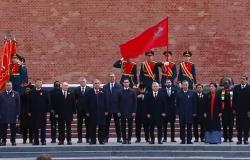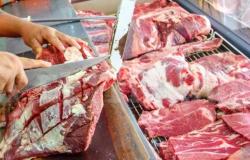The book has proven more than a paper ruma covered by two tapas, has become a company, remedy, guide or jewel for millions of readers during their thousands of years of existence. New stories are published every year and 2025 has not been the exception. Although the Peruvian publishing industry has failed to mature at the speed of others, this has not deprived of offering important novelties, both in the plane of fiction and in non -fiction.
Huaraca – Luis Francisco Palomino
Es The second storybook of Luis Francisco Palomino, Peruvian writer recognized for his raw and direct style. In this work, Palomino addresses the social and emotional wounds of contemporary Peruvian societyexploring issues such as violence, inequality and alienation. The stories develop in urban and rural scenarios, presenting complex characters that face their own internal and external conflicts. With an incisive and deep prose, Huaraca invites the reader to reflect on hidden realities and contradictions of daily life in current Peru.
We cannot explain why we cry – Giovanna Pollarolo
Through stories of seemingly perfect lives but marked by personal crisis, such as a woman who suffers an inexplicable evil or a millionaire widow rediscovering happiness, the author Explore issues of pain, heartbreak and internal struggle to free yourself. With a suffocating and bleak atmosphere, the characters descend to madness to emerge transformed.
A name for your island – Katya Adaui
Seven Katya Adaui stories that explore the fragility and strength of human ties. The characters, always in physical and emotional transit, sail between the desire for connection and the need for loneliness. Through spaces such as airports, ships and hotel rooms, Adaui dissects intimacy, misunderstanding and contradiction. With sharp dialogues and a prose that flows between poetry and the narrative, the author creates a cartography of affections that invites us to reflect on how we build the bridges between our own islands.
Minimosca – Gustavo Faverón
“Labyrinth in the form of a novel” has been the description used by the Candaya publishing house and is not far from reality. The publication intertes multiple stories that travel more than a century of history in Europe and America: world Wars, Holocaust, Latin American dictatorships, avant -garde art, and the violence of the Shining Path.
-His characters – migrants, survivors, psychopaths, artists and literary figures such as César Vallejo or Stephen King – face madness, exile, violence and absurd, but also seek redemption through love and friendship. Reading is a challenge, but not a burden.
Global Peru. Explain Peru with the world – Adrián Lerner and Alberto Vergara
A deep analysis of how the global context influences Peruvian reality. The various authors address issues such as economy, politics and society, highlighting how international dynamics affect the development of the country. Through a critical perspective, they explore the opportunities and challenges faced by Peru in an interconnected worldoffering an integral vision that combines empirical data with theoretical reflections. It is an essential work to understand the complexities of Peru in the 21st century.
I am the owner of my pleasure. women’s Masturbation Manual – Sandra Campó
Work that challenges taboos about female sexuality. The author, sexual educator and creator of Sexpert in pleasure, It offers a direct and empowering approach, inviting women to explore their own body without shame. The book disassembles historical myths and presents the clitoris as a female pleasure center. It includes a “decalogue of pleasure to alone” that promotes self -knowledge, autonomy and self -esteem. It is an invitation to live a free and conscious sexuality.
Mario Vargas Llosa. Words in the world – Alonso Cueto
The author of “The Blue Hour” explores the work of the Peruvian Nobel through six chapters. Cueto combines critical analysis with a personal look, the result of its close relationship with the Vargas Llosa family since childhood. The text addresses recurrent issues in the author’s work, such as power, utopia and diversity, and offers biographical data that enrich the understanding of its literature without becoming a traditional biography. The edition includes a photographic dossier that illustrates key moments in the writer’s life.
Gaps that are extended – Úrsula Aldana
Aldana analyzes the effects of economic growth in Peru during the first decades of the 21st century. From a solid theoretical and empirical basis, and with an accessible language, lAuthor questions the idea that economic growth automatically benefits the entire population. While recognizing that such growth can generate improvements for broad sectors, it also demonstrates how, in a country with marked structural inequalities, this process has contributed to deepen social and economic gaps. The book offers a critical and necessary look on development in unequal contexts.







